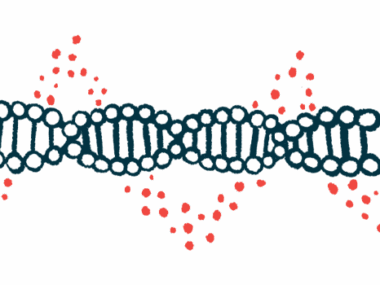Rare Mutation in ALS-linked SOD1 Gene Helps Lead to CMT Diagnosis
Woman's CMT was due to mutation in a gene more commonly associated with ALS
Written by |

A rare mutation in the SOD1 gene helped doctors to diagnose a woman with Charcot-Marie-Tooth (CMT) disease, a study reports.
Although SOD1 mutations are commonly associated with the neurodegenerative disease amyotrophic lateral sclerosis (ALS), clinical assessments confirmed a CMT diagnosis.
Researchers hoped this report would raise awareness of SOD1 mutations in CMT.
The study, “Hereditary motor and sensory neuropathy with SOD1-mutant: A case report,” was published in the journal Medicine.
More than 90 genes are associated with CMT
CMT is a group of inherited disorders affecting the nerves that control movement and sensation in the arms and legs, called the peripheral nervous system. Symptoms include the progressive loss of sensation, as well as muscle weakness and atrophy (shrinkage).
More than 90 genes are known to be associated with CMT, with each gene linked to one or more disease subtypes. However, cases of CMT related to mutations in the SOD1 gene, which encodes an enzyme that protects cells from harmful oxidants, are rarely reported.
In this report, researchers in China described the case of a 50-year-old woman diagnosed with CMT due to a rare SOD1 mutation that has also been found in ALS patients.
The otherwise healthy woman was admitted to the hospital with a five-year history of progressive weakness in her right leg and four months of experiencing weakness in her left leg. The long-term weakness in her right leg was accompanied by pain in the right foot.
Electromyography (EMG) assessment, to measure the electrical activity connecting her muscles to specialized nerve cells called motor neurons, found abnormalities in the nerves of her legs. However, the patient and her family did not believe the symptom was significant, and she went without further treatment.
The mutation of the SOD1 gene in this family is a common mutation site of ALS. However, the patient’s multiple EMG changes were not consistent with the changes in ALS
Patient’s leg muscles progressively weaken
In the past two years, her right leg weakness progressively worsened and atrophy was also seen, such that she began using crutches. She went to the hospital and received another EMG, which confirmed the earlier results. She received nerve-related nutritional treatment, which improved her condition slightly.
In the four months before hospitalization, the weakness spread to her left leg, and she experienced a fall without an apparent cause. Left leg weakness progressed until she was unable to walk. Otherwise, all other bodily functions appeared normal, with no change in body weight.
Further examinations revealed mild speech problems but no cognitive impairments. Grip strength was decreased, and the muscle strength in her legs was low, with muscle atrophy seen in both legs. Another EMG showed nerve conduction abnormalities in both legs, alongside multiple peripheral nerve lesions, and MRI scans found degenerative changes in the lower spinal cord.
Routine tests of the blood and cerebrospinal fluid, the liquid surrounding the spinal cord and brain, were all within normal range.
According to family history, her father had a similar condition, with onset at age 50. He died at age 70. Family genetic testing revealed she and her daughter carried a SOD1 mutation called c.140A > G, whereby adenine (A) is changed to guanine (G), both DNA building blocks. The woman’s spouse, mother, and son did not have this mutation.
“The mutation of the SOD1 gene in this family is a common mutation site of ALS,” the researchers noted. “However, the patient’s multiple EMG changes were not consistent with the changes in ALS.”
Based on all findings, she was diagnosed with CMT and was given nerve and symptomatic treatments, but without apparent improvements.
“We hope that this case report allows clinicians to raise awareness of the fact that SOD1 can cause peripheral neuropathy damage,” the researchers wrote.







